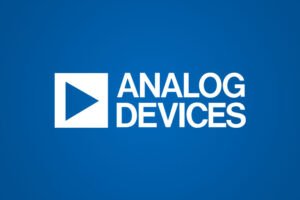
In the competitive landscape of analog and mixed-signal semiconductors, two stalwarts dominate the industry: Texas Instruments (TI) and Analog Devices (ADI). Both companies boast decades of experience, diversified product portfolios, and strong ties to the automotive and industrial markets. Yet subtle differences in strategy, innovation focus, and valuation profiles can make one more compelling than the other depending on your investment objectives. Below, we explore their relative strengths and weaknesses, drawing on firsthand insights and recent financial trends to explain why ADI may offer more attractive upside potential today.
Innovation & Product Strategy
Texas Instruments historically pivoted from high‐margin baseband processors to mass‑production analog and embedded products under CEO Richard Templeton. While this shift fortified TI’s manufacturing prowess—boosting capacity and operational efficiencies—it also led to a degree of product commoditization. Over the past decade, TI’s analog offerings have faced pricing pressure from emerging Chinese players (e.g., SG Micro, Silergy, 3peak) and global challengers such as Monolithic Power Systems (MPS). Meanwhile, TI’s embedded innovation has lagged; despite recent RF‑SoC investments, low‑cost alternatives from Espressif and Nordic Semiconductor have chipped away at their market share.
Analog Devices, by contrast, maintains a more innovation‑driven posture which drives customer loyalty. ADI continues heavy R&D investment—roughly 20% of sales—focusing on precision data converters, signal chain solutions, and advanced power management. Its higher‐performance analog and data conversion products command pricing premiums and carry higher technical barriers to entry. This commitment to differentiation has helped ADI maintain gross margins in the mid‑60% range, compared to TI’s near‑term level of ~58%
Financial Health & Margin Trends
Both TI and ADI are highly profitable, but margin trajectories reveal notable contrasts. TI’s gross margin has compressed from the upper 60s down to approximately 58% (TTM), and its net margin has retreated to ~30%, down from the mid‑40s in 2015. This reflects competitive intensity in commoditized segments and slower top‑line growth. ADI, meanwhile, reports gross margins around 65–68% and net margins in the 25–30% range, buoyed by its higher‑value product mix.
From a revenue perspective, TI’s trailing twelve‑month sales stand at about $16 billion, compared with ADI’s roughly $12 billion. Though TI generates more absolute dollars, ADI’s margin profile translates into more earnings power per revenue dollar, and less sensitivity to price erosion. Operating margins underscore this dynamic: ADI operates around 35–36% margins versus TI’s ~34.9% (TTM), despite TI’s scale advantages.
Valuation & Growth Prospects
Valuation is a critical determinant for total return potential. As of mid‑2025, TI trades at a trailing P/E of ~37× and forward P/E near 30×—levels above its 10‑year median of ~22×. Its PEG ratio hovers around 2.1×, signaling that current valuations assume sustained earnings acceleration despite slowing growth. EV/EBITDA multiples of ~26× further suggest limited room for multiple expansion.
ADI’s valuation sits at a higher trailing P/E of ~62× but a more moderate forward P/E around 29×, reflecting strong anticipated earnings recovery. Its PEG of ~1.6× indicates a more balanced risk/reward: investors are paying up for growth, yet ADI’s R&D‑led roadmap and premium product positioning support those expectations. EV/EBITDA near 30× aligns with peers in the high‑performance analog segment, underscoring ADI’s premium stature.
Market Share & Competitive Dynamics
TI retains the largest analog market share globally—approximately 19–20% as of 2022—but has lost roughly 2% over the past two years due to intensifying competition. In contrast, ADI’s share in precision analog and data conversion remains stable, with fewer credible low‑cost substitutes for its highest‑margin offerings. China‑based analog upstarts have focused primarily on general‑purpose products, leaving ADI’s advanced roadmap less encroached.
In embedded RF and microcontroller spaces, TI’s efforts to catch up are hampered by entrenched players and cost‑sensitive applications. ADI, with selective acquisitions (e.g., Maxim Integrated), has expanded its wireless and sensor portfolio, targeting industrial IoT and 5G infrastructure—segments with higher barriers and stronger secular tailwinds.
End‑Market Exposure
Both companies derive significant revenue from automotive and industrial sectors—together comprising over 60% of sales for each. These end markets benefit from structural growth drivers: electric vehicles, smart factories, renewable energy, and advanced driver assistance systems. TI’s scale and long‑term supply agreements lend stability, while ADI’s higher‑precision focus translates into stronger content per vehicle or factory deployment. In defense, aerospace, and healthcare, ADI also commands meaningful share, diversifying its exposure beyond traditional analog applications.
Dividend & Shareholder Returns
TI is the income investor’s dream, boasting nearly 20 consecutive years of dividend increases and current yields around 3%. Its robust free cash flow generation underpins a sustainable payout ratio near 60% of earnings. ADI also pays a dividend—yielding roughly 1.5%—but prioritizes reinvestment into growth initiatives. Total shareholder returns over the past seven years have favored ADI, driven by multiple expansion and superior earnings growth, whereas TI delivered sub‑50% total return (excluding a recent short‑term rally).
Geopolitical & Macro Considerations
The semiconductor sector faces persistent geopolitical headwinds, with export controls and supply‑chain realignments adding complexity. TI’s significant manufacturing footprint in the U.S. and Asia exposes it to potential regulatory shifts. ADI’s fabless model and diversified outsourcing network afford greater flexibility, mitigating some national security risks. Macro‐economic uncertainties—such as industrial inventory cycles—could dampen near‑term demand for both, but ADI’s specialized product mix may prove more resilient against cyclicality.
Investment Thesis & Portfolio Fit
Growth Investors: ADI’s higher R&D cadence, premium valuations supported by forward earnings, and superior margin profile make it a more compelling growth story. Its specialization in precision analog and high‑growth end markets positions it for sustained earnings acceleration.
Income and Value Seekers: TI remains a dependable dividend play with strong cash flow and broad market penetration. Conservative portfolios looking for yield and stability may prefer TI’s established track record, albeit at the cost of lower capital appreciation potential.
Balanced Allocation: A core–satellite approach could allocate a base position to TI for income stability, complemented by a growth‑oriented position in ADI to capture upside from innovation leadership.
While TI excels as a dividend stalwart with scale advantages, the shift toward commoditization and margin pressure limit its growth upside. Analog Devices, by maintaining a relentless focus on high‑performance, differentiated products and robust R&D investment, presents a more attractive growth and total return profile—making ADI a smart investment choice for those seeking a blend of innovation, margin resilience, and capital appreciation potential.






